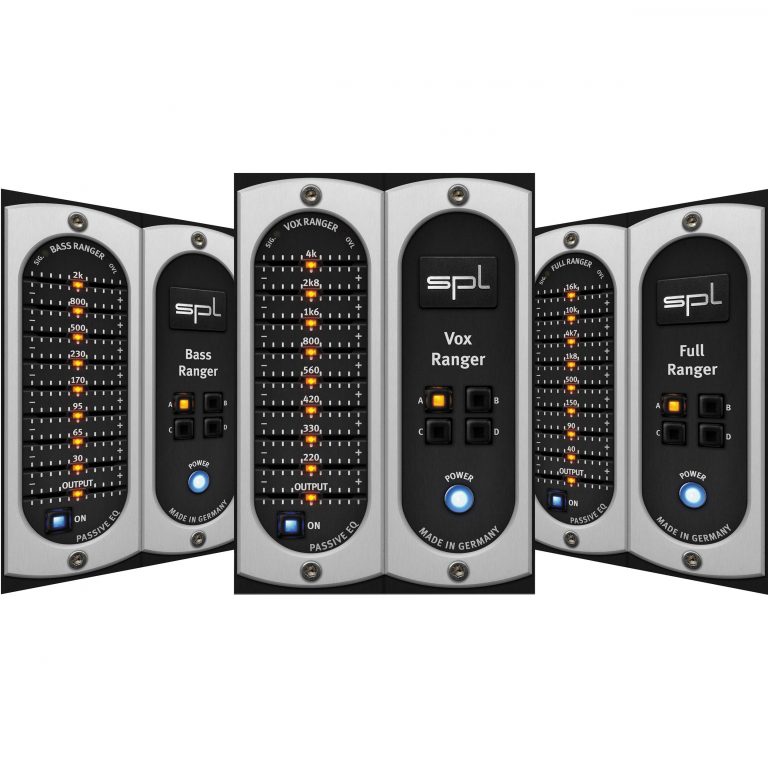

Bring your threshold down to just above where the gain reduction meter shows the compressor engaging with the attack and ratio at twelve o’ clock. Getting your basic settings is the same here as it is with most other compressors, whether they cost half or twenty times as much. Rack it up, plug it in, flip the switch on the front panel and the Bus-Comp is ready to go to work. Inputs and outputs are available interchangeably on balanced TRS ¼” and XLR connectors, with the sidechain input on XLR only. Setting up the Warm Audio Bus Compressor is a fairly standard affair, with a beefy internal power supply fed by the included IEC cable. Is it right for each application? Well, that’s why there’s an on/off button. Warm Audio had the flash of genius to make this accessible at the push of a button, letting the user quickly decide between the two. This is the sort of thing that has given birth to dozens of nebulous audio industry buzz-words: “Depth”, “Warmth”, “Heat” and the dreaded “Mojo” come to mind. When slapped around with too much signal activity at once, things can get wild and wooly – but not in a bad way. When engaged, the intent is to give the soundstage depth, while bringing out pleasing, subtle second- and third-order harmonics. The Bus-Comp features a switchable discrete op-amp stage with two chonkin’ USA-made Cinemag iron 1:1 transformers. The Bus Comp lets you dial this in all the way from 0 (off) to 185hz in roughly 30hz steps, more than enough range to find the sweet spot – letting the kicks and subs occupy their own crucial space below deck without sucking the other elements down with it. Setting a variable high-pass filter as a sidechain tells the compressor to “ignore” the rumble in the jungle below a certain point. Cool for your whole stereo mix? Probably not.

However, amplitude from bass-heavy instruments like kick drums, subs and low-end bass notes can force the compressor into what’s often called “pumping” or “breathing”.
CYTOMIC THE GLUE ALTERNATIVE FULL
If you’re scratching your head at some of this, we’ll lay it out quickly (or you can check the glossary at the end): A compressor’s RMS detection circuit is triggered by the full spectrum of a mix. Even SSL’s own stereo rack-mount version costing thousands more overlooks what is a very critical part of using this compressor to its fullest potential. Wait, did you just say “sidechain frequency”?Ī frequent critique of this style of compressor is the lack of an internal high-pass filter for sidechaining the detection circuit. Six sturdy detented knobs click in the “usual suspects” parameters – but with the addition of a selectable highpass sidechain frequency. Housed in a sturdy black 1U steel chassis, the stereo-only unit keeps controls to just a dummy-proof set of bare necessities. Though the Bus-Comp may have some British DNA, a quick look reveals inside and out reveals as many similarities as it does differences. Priced at an almost-TOO-reasonable MSRP of $699, this is designed to do “that thing”… and it does the crap out of it. Strapped across a stereo mix or subgroup, the Bus-Comp delivers a first-class, totally analog path of gluey squish, squeeze and polish. That’s the sound that Austin, TX-based Warm Audio has set out to bring within reach of every even halfway-serious studio.The Warm Audio Bus Compressor is exactly what it says on the tin. And, for once, every member of the band stops saying they need to be louder (for an hour or two at least). Untamable Kilimanjaro-esque peaks become a bunny hill. Elements that won’t “sit right” suddenly fold their napkins politely in their lap. Often referred to as “the glue”, this design has an almost mythical ability to put meat on the bones of even the skinniest of mixes. Though certainly not the only high-end compressor available, it’s rightfully earned its place as many engineers’ immediate “go-to”.
CYTOMIC THE GLUE ALTERNATIVE PROFESSIONAL
Warm Audio’s latest entry in the world of analog compression takes inspiration from one of professional recording’s most famously used pieces of hardware: The stereo bus compressor from Solid State Logic’s large format consoles. We’re pretty fond of our writing but for the illiterate or impatient, Click HERE to get straight to the audio at the bottom of the review.


 0 kommentar(er)
0 kommentar(er)
